GPCS Graduate Students
Chris Stallman and Yihan Wu entered the Graduate Program in Cognitive Science in Fall 2016.
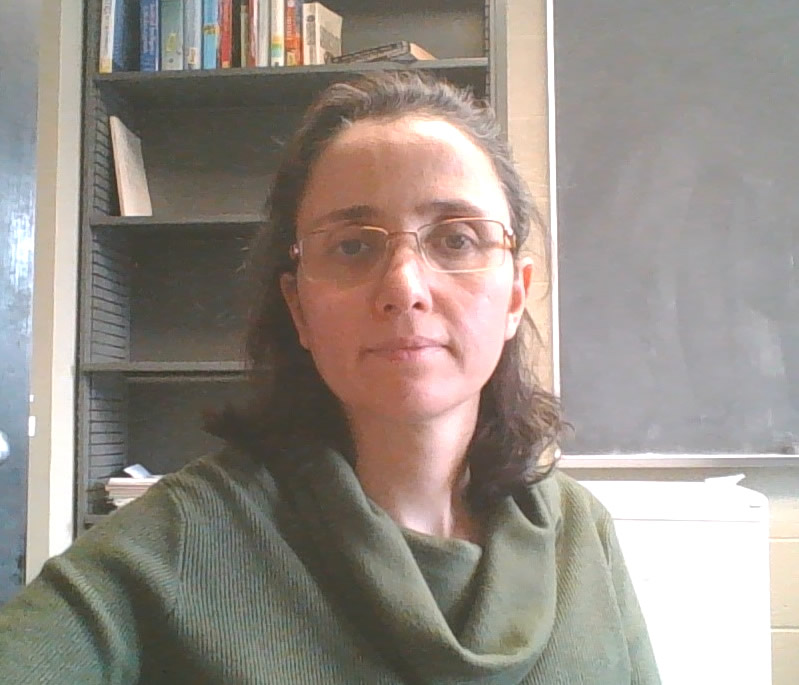
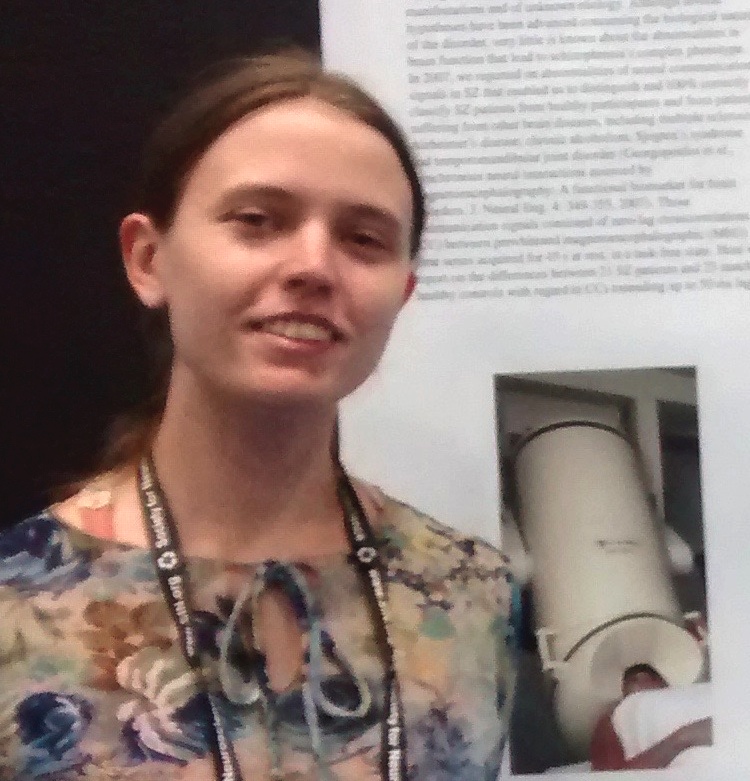
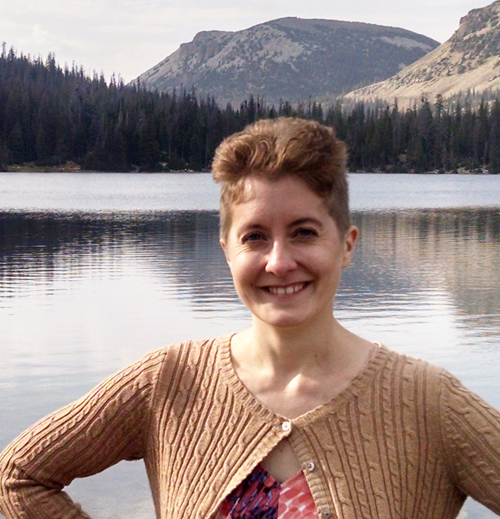
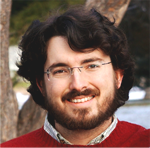
Christie ST & Pakhomov S (2011) Prosody Toolkit: Integrating HTK, Praat and WEKA.
A major hurdle in computational speech analysis is the effective integration of available tools originally developed for purposes unrelated to each other. We present a Python-based tool to enable an efficient and organized processing workflow incorporating automatic speech recognition using HTK, phoneme-level prosodic feature extraction in Praat and machine learning in WEKA. Our system is extensible, customizable and organizes prosodic data by phoneme and time stamp in a tabular fashion in preparation for analysis using other utilities. Plotting of prosodic information is supported to enable visualization of prosodic features.
Christie ST (2012) Dynamics of spatial and nonspatial LIF networks.
A leaky integrate and fire (LIF) network was modeled according to results reported by Amit and Brunel ([2]). Similar similar network characteristics were achieved in our model despite somewhat higher average firing rates. Spatial structure was then introduced, with connectivity constrained by biological parameters derived from the cat visual cortex. Using the assumption that external excitatory input to neurons in a region is on average equal to excitatory recurrent input, it was discovered that synaptic efficacies must be very finely tuned to achieve firing rates and network behavior similar to that seen in the nonspatial network. Increasing external excitatory input expands the range of acceptable synaptic efficacies.
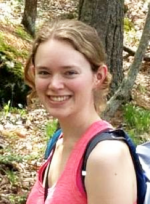
Windy Torgerud was born in Salt Lake City, Utah and moved to California when she was 2 and to Wisconsin when she was 10. She came to the University of Minnesotanto get her bachelor’s degree in Neuroscience after high school. With 8 years of research experience under her belt, she enrolled in the Cognitive Science PhD program in 2013. She has been playing video games since 3 or 4 years old, reading the screen aloud to her older brother as they would play together for hours on end (Windy notes, "I was a faster reader and we could progress more quickly that way.")
Windy loves to take things apart and figure out how they work, hence to some extrapolated degree her interest in how the brain works. ("The brain, however, does not lend itself quite as easily to be taken apart for wire tracing as that alarm clock that was splayed across my floor as a child, or the various computer bits later on. But hey, who doesn’t love a good challenge!") She is interested in using fundamental knowledge about how the brain works, together with how it evolved, to discover new information about human behavior and emotions.
Aside from gaming and the never-ending pursuit of knowledge, Windy likes to bike, hike, do yoga, go rock climbing, SCUBA diving and otherwise enjoy life with her husband and two amazing little boys.
Affective decision making: effects of arousal on a random dot motion task - COSYNE 2015 poster
The effects of emotion on decision making have not been fully characterized. In this pilot study we sought to computationally model the effects of arousal on a two alternative forced choice random dot motion coherence task using a Bayesian hierarchical drift diffusion model (HDDM). Subjects were exposed to trials consisting of one of three different levels of arousal condition immediately preceding performance on a random dot motion decision making task. Arousal's effect on decision making was modeled as a constant term modulating evidence accrual rate, decision threshold boundary, both, or neither. These four models were compared using hierarchical Bayesian estimation to determine which hypothesis best fit the data. Additionally, biometric data including galvanic skin response (GSR), heart rate (HR), eye tracking data, and facial emotional expression data was collected for each participant. We found that the threshold only model most accurately characterizes our data. This implies that arousal influences decision making by decreasing participants' conservativeness in their responses, rather than by increasing the accrual of evidence via attentional allocation.
Arousal decreases conservativeness in a random dot motion decision making task - SFN 2015
Emotional arousal, a key factor often used to characterize and describe emotions, gears up the body to react to stimuli in the environment. Arousal could functionally accomplish this either by increasing attentiveness or by decreasing conservativeness. Increasing attentiveness effectively increases the rate at which the brain processes incoming perceptual information. Alternatively, an individual who is being less conservative in a decision would be comparatively more willing to act on less evidence.
In this pilot study we sought to determine the effects of arousal on decision making by using a two alternative forced choice random dot motion coherence task analyzed with a Bayesian hierarchical drift diffusion model (HDDM). Subjects were exposed to trials consisting of one of three different levels of arousal immediately preceding performance on a random dot motion decision making task. The effect of arousal on decision making was modeled as a constant term modulating perceptual evidence accrual rate, decision threshold boundary (conservativeness in response), both, or neither. These four models were compared using hierarchical Bayesian estimation to determine which best fit the data. The hierarchical nature of the model allowed us to compare data both within and across subjects.
Biometric data including galvanic skin response (GSR), heart rate (HR), eye tracking, and automatic recognition of facial emotional expression data were collected for each participant during the experiment. This expansive set of biometric data not only enabled us to validate the effectiveness of our arousal stimuli, but importantly, enabled us to derive our emotional dimensions based upon the tasks and measurements themselves, rather than an a priori assignment of dimensions. Rather than assume that arousal is limited to its effects on heart rate we sought to determine a more complete set of emotional measures.
We found that the threshold only model most accurately characterizes the data. This implies that arousal influences decision making by decreasing participants' conservativeness in their responses, rather than by altering the accrual of perceptual evidence via attentional allocation. Biometric validation of our arousal manipulations indicates that the biological measures that predict the level of arousal for each stimulus also predict reaction time. In addition, the emotion data could be used to extract a simple signature of arousal which predicts reaction time on a trial-by-trial basis, seconds before the decision is actually executed.

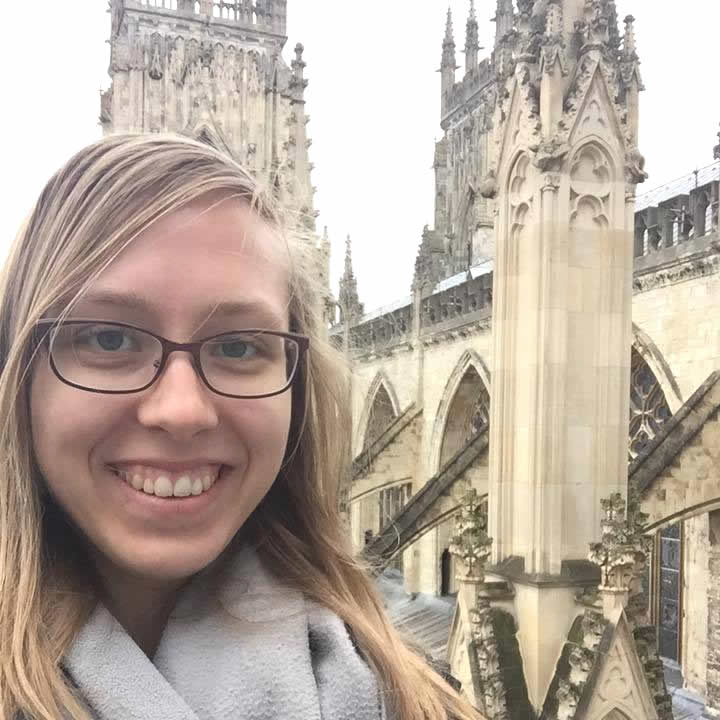
We, as human beings, are unique. As far as we know, we alone of all the species on Earth can think, reason, and use language. How is this possible? What makes us so special? These questions, as well as my exploration of linguistics and the psychology of language as an undergraduate, are the driving forces behind my interest in Cognitive Science research. I am fascinated by the mind and how it can process and generate human language. Particularly, I’m interested in exactly what the mind is, how it can handle language, and where it resides physically in the brain.
I earned a BA from Luther College in Decorah, IA, where I studied Psychology, English, and Linguistics. I’m glad to be back home in Minnesota to continue my study of why (and how) people do what they do.
GPCS Graduates

Scott NM (2012) Do animals have elements of language? A review of the current literature. Cognitive Critique 6 53:70
The purpose of this paper is to provide a summary of the available evidence rather than assess the current state of the field. One question that may arise is, Why should we bother assessing the language abilities of animals or their intelligence? My answer is that since each animal is related to every other by virtue of sharing a common ancestor at some point in evolutionary history, by understanding the capabilities of all animals we can form a better understanding of our own intelligence, what makes us special within the animal kingdom, and where it only appears we are special. Through this understanding, we hopefully can overcome our limitations and find solutions which nature has solved long ago in other species.
Scott N & Pika S (in press) A call for conformity: gesture studies in human and non-human primates, in Developments In Primate Gesture Research. John Benjamins Publishing Co.
Current developments in gesture studies have vastly improved our understanding of this form of communication; however, much is still being added, especially with regard to the theory of gestural origin of language (e.g. Corballis 2002; Arbib, Liebal and Pika 2008; Armstrong and Wilcox 2007). One of the most informative techniques for unraveling the evolutionary history of this communicative modality is to look to our closest living relatives, the non-human primates (hereafter primates; Tomasello 2008; Pika 2009). In order to accomplish comparative research, and therefore this task, a standard definition has to be in place. As it stands, researchers of gesture have created their own definitions, which are often tailored to their specific objectives, and therefore comparison within let alone between species is impossible.
The following is a discussion of recent approaches to gestural communiction in human and primates. Subsequently, in order to further the study of gesture in a way that accommodates all species, we construct a dimensional gesture framework by linking Tinbergen’s four “why’s” (Tinbergen 1963) with McNeill’s Gesture Continuum (McNeill 1992). Before we offer a new direction for future studies we prescribe a dimensional model for describing gesture and provide explicit directions for its applicability. Finally, we propose a comprehensive definition of gesture, which achieves these four goals:
1) omit any actions where the signaler achieves the goal without necessitating a reaction from the recipient;
2) remove necessity for overt intention;
3) exclude self-directed actions, which do not involve a recipient and;
4) require that the action must be recognized as meaningful for all participants.
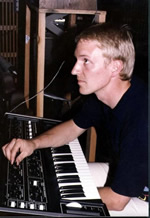
A Twin Cities native, Roger Dumas has variously assumed the roles of cognitive scientist, recording technology educator, session musician, corporate president and instructional designer. He has recorded with numerous artists, taught music production courses, built electronic music labs, and created instructional websites.
Roger first encountered analog synthesizers in the windowless basement studio in Scott Hall on the University of Minnesota's Twin Cities campus, where he spent long hours neglecting his chemistry coursework in in order to make two-track recordings with the Moog IIIp, ARP 2500 and Electrocomp 100. (At that point, composing serious music was difficult, especially since his mentor, Dr. Eric Stokes, had removed the keyboard controllers.) In 1974, Roger was hired by ARP Synthesizers in Massachusetts to write operating manuals and patch books for the ARP 2600, Avatar and Axxe. He later worked for Dr. Robert A. Moog at Moog Music in Buffalo, NY, where he penned instructional materials for the world's first commercially-available polyphonic synthesizer, the Polymoog. While out East, he also found consulting work with popular artists John Lennon, Cat Stevens, Patrick Moraz (The Moody Blues), Tim Weisberg and Jean Alain Roussel (The Police).
Roger returned to Minneapolis to start The Roger Dodger Music Co. in 1976. His company provided sales, service and instruction on electronic music synthesizers and recording equipment in the Twin Cities for almost twenty-five years. Years after helping a struggling 17-year-old musician from North Minneapolis create sounds for his demo recordings, Roger became the synthesizer 'go-to guy' at Prince's Paisley Park Studios, instructing the resident musicians and engineers in the use of the latest innovations in music technology. His visits to the FlyteTyme Studios of Terry Lewis & Jimmy Jam brought him more session work, helping him to land RIAA gold and platinum record awards for his sound design for Janet Jackson's album "Control" and Lipps Inc.'s single "Funkytown".
As the director of the Electronic Music Minor degree program at the University of St. Thomas in St. Paul, Roger designed and built Studio UST, a room full of computers, synthesizers and recording equipment. He created and taught all of the courses, which included MIDI Studio, Multi-track Tape Recording, Digital Recording/Sampling, Music for Video, and Music Media. Roger also designed and offered courses for Graduate Programs in Music Education during his twenty years at UST.
Roger holds a Ph.D in Cognitive Neuroscience (UofM), an M.A. in Learning Technology (University of St. Thomas), a B.S. in Music Education (UofM) and has been certified by Capella University as a designer of online instruction. As a Research Fellow at the Brain Sciences Center/University of Minnesota in Minneapolis, Roger Dumas and co-investigator Dr. Apostolos Georgopoulos are developing a method of translating neural activity to musical sounds. He has been invited to speak about these 'brain sonifications' on public radio and on college campuses across the U.S. Their CD "Pieces of Mind" features fifteen of his instrumental arrangements of musically-translated data from magnetoencephalography (MEG) experiments. They also are investigating the brain’s capacity for processing melodic pitch, melodic contour, melodic movement in multi-dimensional tonal space and expectation of note-transition probability.
Title:
"Melodies in space: Neural processing of musical features"
Neurophysiological studies of brain lesions and related behavioral deficits have shown that the human brain is a complex functional network comprising specialized neural populations. Although pitch perception has been studied extensively by musicologists, philosophers, psychologists, audiologists, and, lately, neuroscientists (Levitin & Tirovolas, 2011; Purwins & Hardoon, 2009), little is written about cortical sub-networks involved in the processing of melodies. Our approach to this problem is novel, in that we employ magnetoencephalography (MEG) to study four melodic features: pitch, contour, interval and perplexity.
Dumas RE & Georgopoulos AP (2009) What pre-whitened music can telll us about multi-instrument compositions. J. Math & Music 3 3 165:173
We have discovered remarkable temporal associations between instruments in multi-instrument musical pieces after elimination of melody. This indicates the presence of a compositional ‘structural’ framework among instruments based on dynamic, temporal interactions. We hypothesize that such a framework is at the heart of the process of musical composition. Since similar melodies can be arranged in different ways, resulting in unique compositions, the instrument framework above may be a fundamental aspect of the musical arrangement in the composer’s palette.
http://www.tandfonline.com/doi/abs/10.1080/17459730903378273#.U4dUHJRdXog
Neural mechanisms of pitch perception studied using magnetoencephalography (MEG)Dumas RE, Karageorgiou E, Leuthold AC, Georgopoulos AP2 (2006) Slide presentation: Society for Neuroscience annual meeting, Atlanta, GA
We used MEG to investigate the neural mechanisms of pitch perception. Subjects listened to 36 pitched tones (pitch range C1-B3, every semitone; 1s duration; constant loudness) while fixating a point. MEG signals were recorded from 248 axial gradiometers (0.1-400 Hz, sampled @ 1017 Hz, Magnes 3600WH, ; 4-D Neuroimaging, San Diego, CA) during 10 randomized repetitions of each sequence. MEG data were free of cardiac or eye blink artifacts. For each sensor and pitch, the average MEG signal was computed for the central 600 ms of the stimulus. Thus 248 stimulus-response functions (SRFs) were obtained as estimates of neural processing characteristics for the 36 pitches above. We then used these functions to estimate the similarity of neural processing between different sensors and derive a neural network underlying pitch perception. For that purpose, we calculated the product-moment correlation coefficient between all possible pairs of sensor SRFs and chose a conservative threshold (p < 0.001).
We found that approximately 15% of the correlations were significant. Moreover, they were distributed anisotropically in sensor space, as follows. (a) Lateral sensorimotor areas had only sparse significant correlations; (b) SRFs of sensors over (mostly) left parieto-occipital areas were positively correlated; (c) SRFs of sensors over left and right prefrontal areas were positively correlated; (d) long range interhemispheric SRFs in the frontal and prefrontal cortex were negatively correlated; and (e) long range antero-posterior SRFs were also negatively correlated. These findings demonstrat the distributed nature of pitch processing and reveal specific neural networks involved in this function.

Thesis title:
"Behavioral and neural mechanisms underlying exploration and spatial decision"
Abstract:
The ability to explore novel environments and make decisions is a fundamental component of human and animal behavior. Even though significant progress has been made in recent years in understanding the mechanisms of exploration and decision-making, little is known on how the brain extracts, encodes and processes information from the environment to make decisions. The primary goal of this thesis is to understand the behavioral and neural mechanisms underlying the processing of spatial information, acquired during exploration of realistic environments to make spatial decisions. We designed a novel task, in which subjects had to explore maps from various U.S. cities to decide where to build a City Hall, while neuromagnetic fluxes were recorded from their heads using a whole-head MEG device. We found that ongoing neuronal activity in a network of cortical regions was associated with particular spatial parameters of the city maps. This network involved predominantly right frontal and prefrontal areas of the brain, suggesting that these areas have an important role in processing spatial information for making decisions. Additionally, we found other brain areas also involved in the processing of spatial information, such as right temporal areas and cerebellum. These results indicate that processing spatial information for making a decision is a complex process that requires the involvement of more than one region. Finally, we found that the associations between changes in the ongoing neural activity and spatial parameters were modulated by the type of the map. This suggests that, depending on the type of the map, people may use different spatial information to explore the map and make a spatial decision.
We also studied how people make spatial decisions in realistic environments when they were forced to select between a limited set of choices. In this experiment, individuals had to explore maps from various U.S. cities, but now to select between two locations to build a hypothetical Post Office. We recorded subjects' eye positions and analyzed the gaze behavior to characterize how people explored maps to select between these options. We found that subjects were continuously exploring the areas around the two options and the center of the map, by looking back and forth between them before making a decision. Unlike economic choices, in which people follow similar strategies by looking repeatedly at the available options, in our experiment individuals were also exploring the area around the center of the map. These finding suggest that subjects might have mentally placed themselves at the center of the map and evaluated the alternative options with respect to their current location. We also found other similarities with economic choice paradigms, such as people spent more time exploring the area around the option ultimately chosen. Finally, subjects showed a strong bias to select the option they initially explored.
